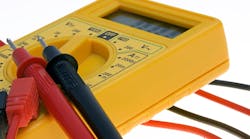You’re the plant electrical engineer. While you were on vacation for a week, a sales rep from a power quality equipment vendor visited the plant. He met with the plant manager and the plant engineer. They allowed him to perform a harmonics analysis on various circuits in the plant.
They were alarmed to see just how bad the harmonics are and tempted to move a purchase forward before you got back. The plant engineer handed you a thick report full of scary-looking images, noting “Given how bad our power is, I don’t understand why things haven’t been failing often.
They want your feedback on the report within the next few days. What issues should you address in addition to the report’s contents?
There is a difference between an equipment sales rep with one instrument looking at one component of power quality and a qualified electrical testing firm conducting a proper power quality analysis.
The absence of a high failure rate means you probably don’t have a significant problem. The presence of harmonics doesn’t mean anything is wrong. If you have excessive 3rd or 5th harmonics, then you may need to implement mitigation or coping strategies. You can probably ignore the other harmonics.
Now that power quality is so top of mind, you have a golden opportunity to purchase that power analyzer you always wanted — or take a related action, such as hire an electrical testing firm to conduct a proper power quality analysis. In the meantime, use a DMM to check for voltage imbalance on your motor circuits.




